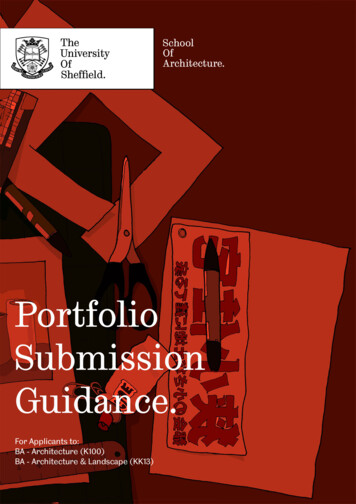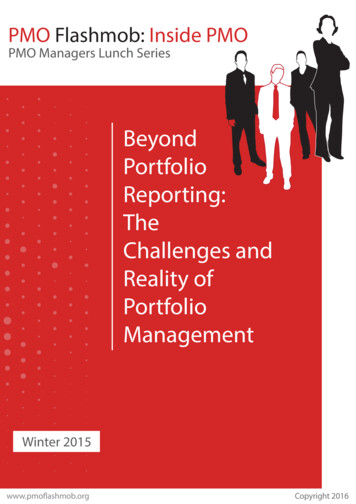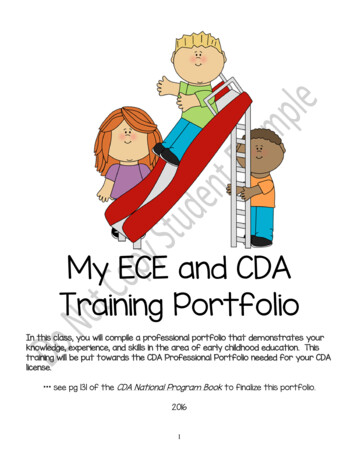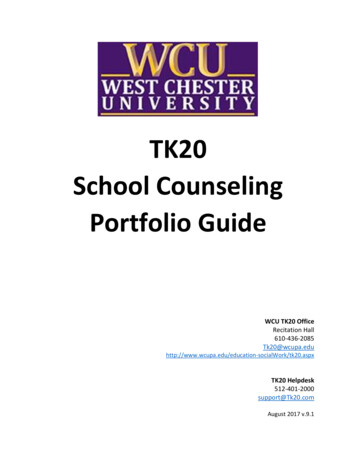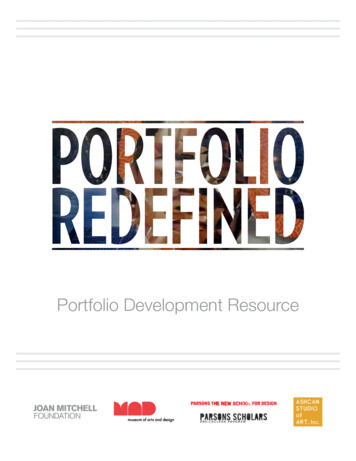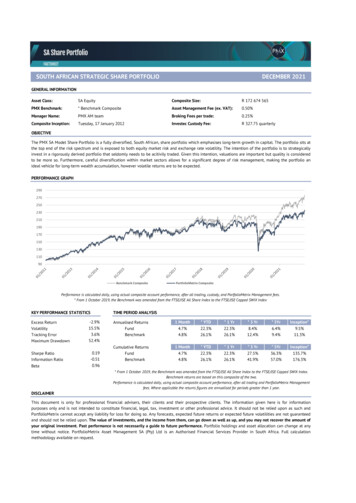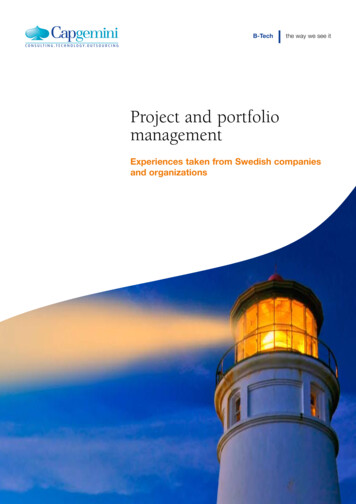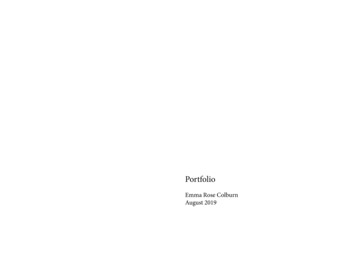
Transcription
PortfolioEmma Rose ColburnAugust 2019
Embodied Mapmaking evaluates the emotional labor of livingamongst massive development-displacement projects, and interpolates the data into the non-assuming form of a T-shirt. Thesescreenprint designs are generated from geocoded data collectedand manipulated using ArcGIS. Data was collected in the innerPortland neighborhoods of Kerns, Old Town/ChinaTown, andPearl District (May-June 2019), queried for particular attributes,manipulated using spatial joins, and designed as screen prints.This project showcases how geodetics combines with creativeindustries to probe connections between fashion (ego) and landscape (geo).1‘Embodied Mapping.’ Map design, production, distribution by Emma Rose Colburn. Advisor: Christopher Grant. Data: Collected onsite; City of Portland; RLIS. 2019.emmarosecolburn@gmail.com
Les Lapins: Auteurs/Autour de Portland presents the process ofteaching new spatial languages to kindergarteners. Is it possibleto describe the places you feel connected to without designating ownership or belonging? Can a map contain many people’sversions of one place at the same time? During guest workshopsthroughout the 2018-2019 school year, the class explored theidea of neighborhood - where we live, what we do there, how itsmells, sounds, and feels. We talked about the difference betweena home and a house, and how even if someone does not have ahouse they still belong. Students drew pictures of where they live,which were then manipulated by geocoding addresses in ArcGIS.The project was presented to contemporary art audiences as aninstallation during the Harrison Park Art Fair.3‘Les Lapins: Auteurs/Autour de Portland.’ Map design, production, publishing by Emma Rose Colburn. Participants: Aurelie Bilbaut and students.Advisor: David Banis. Data: RLIS. 2018-2019.emmarosecolburn@gmail.com
This is a map created using ArcPro, cached to three extents Transatlantic, Senegal, Dakar - to suggest a regional orderingsystem based on shorelines rather than physical landmasses.Designed for navigating Dakar to locate cultural monuments,the map asks its users to juxtapose the scale of the street with thevastness of Transatlantica - a region that encompases West Africa, Southern Europe, and the Carribean. By imaging street-levelgranularity as a function of movement between landmasses,the map asks its viewer to navigate the cityscape vis-a-vis itseconomic interdependencies. This screenshot demonstrates theprocess of caching the map (storing its data at specific scales) inadvance of distributing it online during Dak’ART 2020, the Biennale for Contemporary African Art that draws internationalvisitors to Dakar every two years.5‘Dakar x Transatlantica,’ Map design, production, and publishing by Emma Rose Colburn. Project Advisor: David Banis. Data: Open Street Maps.2018.emmarosecolburn@gmail.com
Can a map be read by being worn? Ecologically ReferencedClothing is a site-responsive clothing line designed to translate four eras of landscape ecology into four seasons of fashion.Drawing from the physical terrain of the Willamette Valley, ERCsuperimposes ecological trends of the last 10,000 years onto thewearer’s body. All materials are sourced from reused clothingshops in Portland OR, and reassembled using a sewing machineand hand stitching. The collection was presented as a gallery exhibition with runway performance in September 2018.7‘Ecologically Referenced Clothing.’ Design, production, distribution by Emma Rose Colburn. Advisor: Michelle Illuminato. 2018.emmarosecolburn@gmail.com
Digital Indigo is a series of paintings altered to correspond tothe Cartesian grid using heads-up digitizing in ArcGIS. First,paintings are created using oil, canvas, and mixed media collageto image birds-eye perspectives of physical places. Next, digitalversions of the images are imported into ArcMap and manipulated using georeferencing, a process that stretches the originalimage to “fit” (become consistent with) the Cartesian grid. Finally, transportation and waterway datasets are imported into theArcMap file, creating the possibility for geospatial analysis to beperformed with an artist’s image of place as the basemap.9‘Digital Indigo.’ Map design, production, and publishing by Emma Rose Colburn. Project Advisor: Daniel Karnes. Data: RLIS. 2016-2017.emmarosecolburn@gmail.com
Williams Ave MapCircles is a collaborative mapping project tocontextualize contemporary experiences of the gentrifying Boise-Eliot neighborhoods with historic records of the part of Portland once known as Black Broadway. Centering on Williams Avenue between Broadway and Killingsworth, participants chartedvarious architectural styles found along streetscapes today. Thisdata was collected over two months during weekly ‘walkshops,’and added to a sculptural map during a participatory sewingcircle. Partnering with geographer Dirk Kinsey, these findingswere compared to a historic map of the neighborhood made withArcGIS to contextualize processes of racialized wealth inequity.11‘Williams Ave MapCircles.’ Socially-engaged map designed, produced, and distributed by Emma Rose Colburn. Project Advisor: Harrell Fletcher.GIS Technician: Dirk Kinsey. Data: Created by project participants, sourced from Polk’s Guide, and RLIS. 2011-2016.emmarosecolburn@gmail.com
4.Oregon Mirror 4617 N Williams 1960's # African American Newspaper, published by Marcus Wellington, Don Alford, editor 5.Portland Challenger 3300 N Williams 1950's African American Newspaper, produced by Bill Hillard Businesses 6.Albina Real Estate 3120 and 3306 N Williams 1950's-80's # Charles Williams, Founder, Curtis McDonald, Agent

